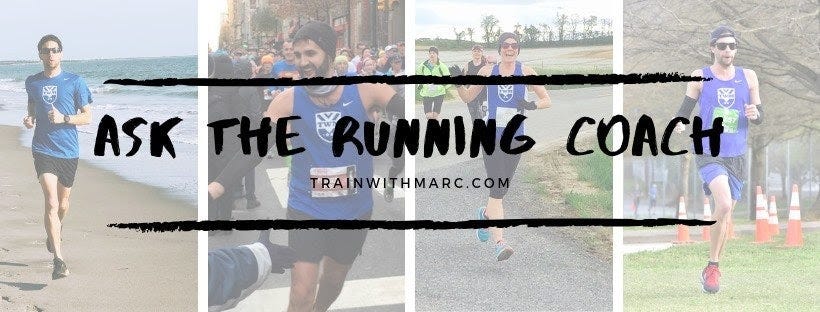Chances are you are going to get hurt during your running career.
And when you do, what do you do? Do you wade through the self-pity like a kid who’s got a scraped knee or do you do something about it?
Running through pain isn’t pretty to watch, but it’s also not good for your body. It’s time to take a step back and regroup by fixing the issue before it becomes a real thing. Something that might force you out of the sport, or even worse, make you become a triathlete. I joke, I joke.
For most of us, a few days up to a week off is just the trick we need to get right. Couple that with some treatment and we should be back to “normal” (like any of this is normal). Then, obviously, or maybe not so much, ease back into training. (I see so many runners take time off from injury, then pop back into serious training. No bueno.)
What treatment should you get? I prefer acupuncture because it’s covered by my insurance (and it’s a great way to get treatment), but active release is great as well and so are some forms of chiropractic work (especially those who deal with runners and add in some muscle manipulation).
But for that lingering pain that just doesn’t go away, we need to take more serious measures.
I found that going to PT (my first time was this Fall for my soleus) was super useful. I had a dedicated time each week (sometimes twice a week) where I was specifically targeting and defeating the imbalances and after about 6 weeks, I was stronger and healthier and back running.
Options
As always, you have options.
For some, when your season requires you to be in shape, like high school or collegiate runners, you have to think about the choices you can make.
Some injured athletes lean towards “letting go” - doing what they do in the off-season, which is just going buck wild. This is, for obvious reasons, not going to end up well if you have races you need to be in shape for.
Others tend to double down on their fitness and go crazy the other way - twice as much cardio, twice as much stretching, twice as much nutty behavior. This isn’t healthy either.
Instead…
Adjustments
Take the time to acknowledge you're injured and then do an appropriate amount of cross-training to stay in shape while allowing for recovery. So if you were doing 4 hours of running a week, you can do somewhere in the neighborhood of 3-5 hours of cardio and feel good about staying in shape.
When you have an easy run on your calendar, do easy cross-training. When you have threshold, do something similar.
Here’s an example of threshold for cross trainers: instead of 3 x a mile (a mile might take you 7 minutes to complete), do 3 x 7 minutes at that same intensity level.
It’s not running, but it’s the next best thing. And the goal is to get you in shape or keep you in shape.
TL;DR(?)
I’m seeing more and more injured runners and not enough of them are doing things to take precautions to prevent injury and/or recover from injury. If we spent a bit more time doing prehab exercises and rehab work, we’d spend more time running and less time injured.
But, when we do get injured, it’s important to spend time staying in shape. I support any mode of cross training that helps you and keeps you motivated. For me, that was swimming and the elliptical. For you, it might be the bike trainer or the rower.
Friday’s Action Plan:
Injuries are a part of the journey. Staying injured isn’t. Get in to see a specialist/doctor and take care of your body while you rehab.
On the Blog:
Running Injury? Stop Training Now
8 Injury Prevention Strategies for Runners
…And From the Newsletter:
What an Injured Runner Should and Shouldn’t Do
Running Injuries are Unfortunate
Quote of the Week:
Do the work. Then keep doing the work. That's the key to everything.
How to Connect with Me:
Thanks for reading until the end. You can certainly get a hold of me in any number of ways, but if you have a comment about this post, click below.
Did you really just love this post? Awesome and thank you. Go ahead and share it on X!






